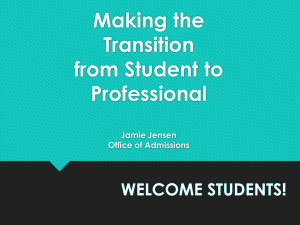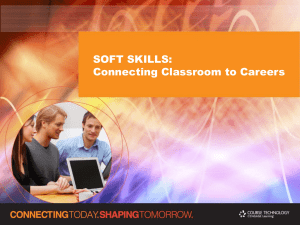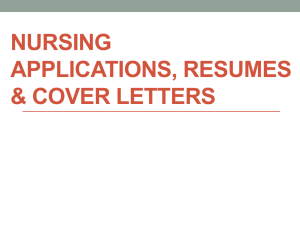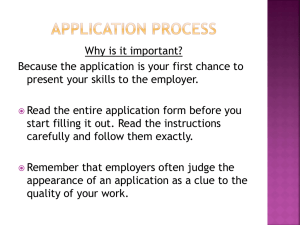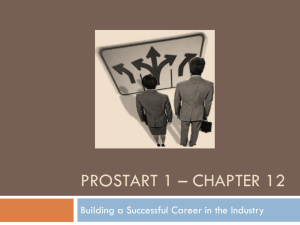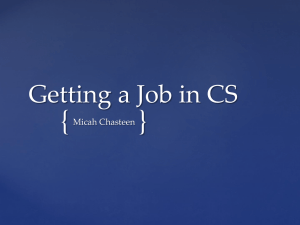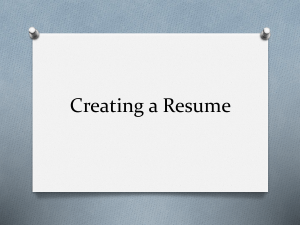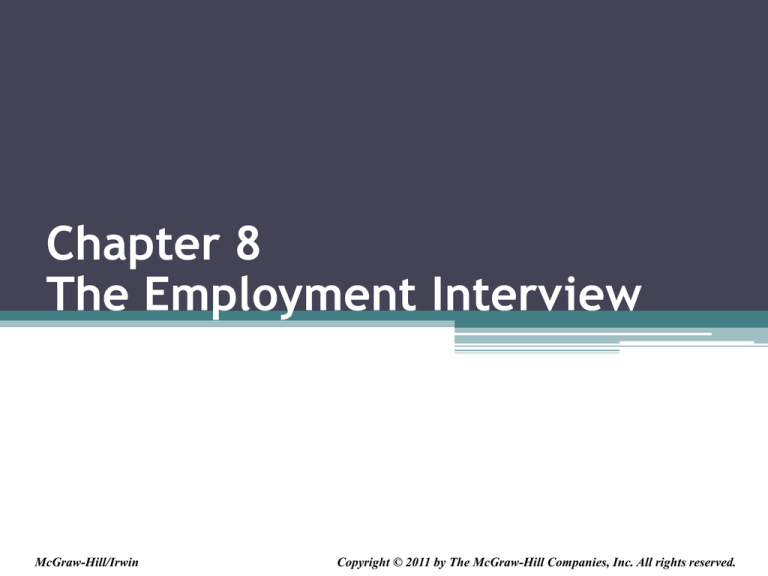
Chapter 8
The Employment Interview
McGraw-Hill/Irwin
Copyright © 2011 by The McGraw-Hill Companies, Inc. All rights reserved.
8-2
Chapter Summary
•
•
•
•
•
•
•
•
•
•
•
Analyzing Yourself
Doing Your Homework
Conducting the Search
Preparing Credentials
Creating a Favorable First Impression
Answering Questions
Asking Questions
The Closing
Evaluation and Follow-Up
Handling Rejection
Summary
8-3
Analyzing Yourself
• Questions to Guide Your Self-Analysis
▫ What are your personality strengths and
weaknesses?
▫ What are your intellectual strengths and
weaknesses?
▫ What are your communicative strengths and
weaknesses?
▫ What have been your accomplishments and
failures?
Continued...
8-4
Analyzing Yourself
• Questions to Guide Your Self-Analysis
▫ What are your professional strengths and
weaknesses?
▫ What do you want in a position and organization?
▫ What are your most valued needs?
▫ What are your professional interests?
▫ What is your tolerance of risk?
8-5
Doing Your Homework
•
•
•
•
•
•
Research your field
Research organizations
Research the recruiter
Research the position
Research current events
Research the interview process
8-6
Doing Your Homework
8-7
Conducting the Search
•
•
•
•
•
•
Networking
Knocking on Doors
Newspapers and Newsletters
The Placement Agency or Service
The Internet
The Career/Job Fair
8-8
Preparing Credentials
• Resumes
▫ No single resume is suitable for all positions.
▫ Content of Resumes
Impressive career objectives; phrase them with great
care.
Your educational record is most important for your
first position.
Relevant experiences can set you apart from the
crowd.
8-9
Preparing Credentials
• Resumes
▫ Types of Resumes
Chronological resume; use action verbs to show that
you are a doer.
Functional resume; place your experiences under
headings that highlight your qualifications.
8-10
Preparing Credentials
8-11
Preparing Credentials
8-12
Preparing Credentials
• Resumes
▫ Mechanics of Resumes
Make your resume easy to review.
Proofread your resume with great care.
Terms and labels are critical in scannable resumes.
There is no simple formula for creating resumes.
8-13
Preparing Credentials
• The Portfolio
▫ Your portfolio shows you in action
• The Cover Letter
▫ Design and target letters to specific positions and
organization
8-14
Preparing Credentials
8-15
Preparing Credentials
• Personal Web Sites, Pages, and Blogs
▫ Can be useful in professional impression
formation
▫ Can provide negative information to interviewers
▫ Studies show recruiters are influenced by cyberinformation about applicants
8-16
Creating a Favorable First Impression
• Relationship of the Interviewing Parties
▫ Know how and when to share control of the
interview.
▫ Understand and adapt to the relationship with the
recruiter.
8-17
Creating a Favorable First Impression
• Dress and Appearance
▫ Dress for a formal business occasion.
▫ Neatness costs nothing and pays dividends.
8-18
Creating a Favorable First Impression
• Dress and Appearance: Advice for Men
▫ Be on the conservative side in dress and
appearance.
▫ Coordinate colors carefully.
▫ When in doubt, ask for help.
8-19
Creating a Favorable First Impression
• Dress and Appearance: Advice for Women
▫ Appearance should not call attention to itself.
▫ Provocative clothing can end your candidacy.
8-20
Creating a Favorable First Impression
• Nonverbal Communication
▫ Nonverbal communication is critical in first
impressions.
▫ Be alive and dynamic.
▫ Good communication skills are important in all
positions.
8-21
Creating a Favorable First Impression
• Arrival and Opening
▫ Be on time and ready to interact.
▫ How you handle yourself during the first few
minutes with a stranger tells them a great deal
about your interpersonal communication and
people skills.
8-22
Answering Questions
• Preparing to Respond
▫ Be ready to handle traditional questions.
▫ Welcome on-the-job questions to show what you
can do.
8-23
Answering Questions
• Responding: Successful Applicants
▫ Listen, think, and then answer.
▫ Effective answers are long on substance and short
on puffery.
▫ Do not play act; act yourself.
▫ Good recruiters detect phoniness.
▫ Be informed before replying.
8-24
Answering Questions
• Responding: Unsuccessful Applicants
▫ Unsuccessful applicants are passive and cautious.
▫ Know what not to do during interviews, and then
do not do it.
8-25
Answering Questions
• Unlawful Questions
▫ Do not be surprised by unlawful questions.
▫ Identifying Unlawful Questions
The pressure is on the applicant.
Review EEO laws and your rights.
Beware of recruiter tricks to get unlawful
information.
8-26
Asking Questions
• Guidelines for asking questions
• Question pitfalls
• Sample applicant questions
8-27
The Closing
•
•
•
•
Be aware of everything you say and do.
Take and active part in the closing.
It’s not over ‘til it’s over.
The employer is likely to note everything you do
and say.
8-28
Evaluation and Follow-Up
• Remember: the interview is more art than
science.
• Be thorough in your debriefing.
• Quality applicants write thank you notes.
8-29
Handling Rejection
• Don’t be a victim
• Use each interview as a learning process
▫ Ask what you might do differently in the next
interview.
▫ How did you handle behavioral-based and critical
incident questions?
▫ What was the nature of the questions you asked?
▫ How might you have prepared more thoroughly?
▫ What did you do that might have turned off the
recruiter?
▫ Was this a position for which you were highly
qualified, or was it a stretch?
8-30
Summary
• We are undergoing a second industrial revolution
that’s moving from a manufacturing to a service and
information-oriented society.
• The best positions in the future will go to those who
understand and are prepared for the selection
process.
• You must know yourself, the position, and the
organization to be selected for a job.
• The job search must be extensive.
• Interviewing skills are increasingly important.

